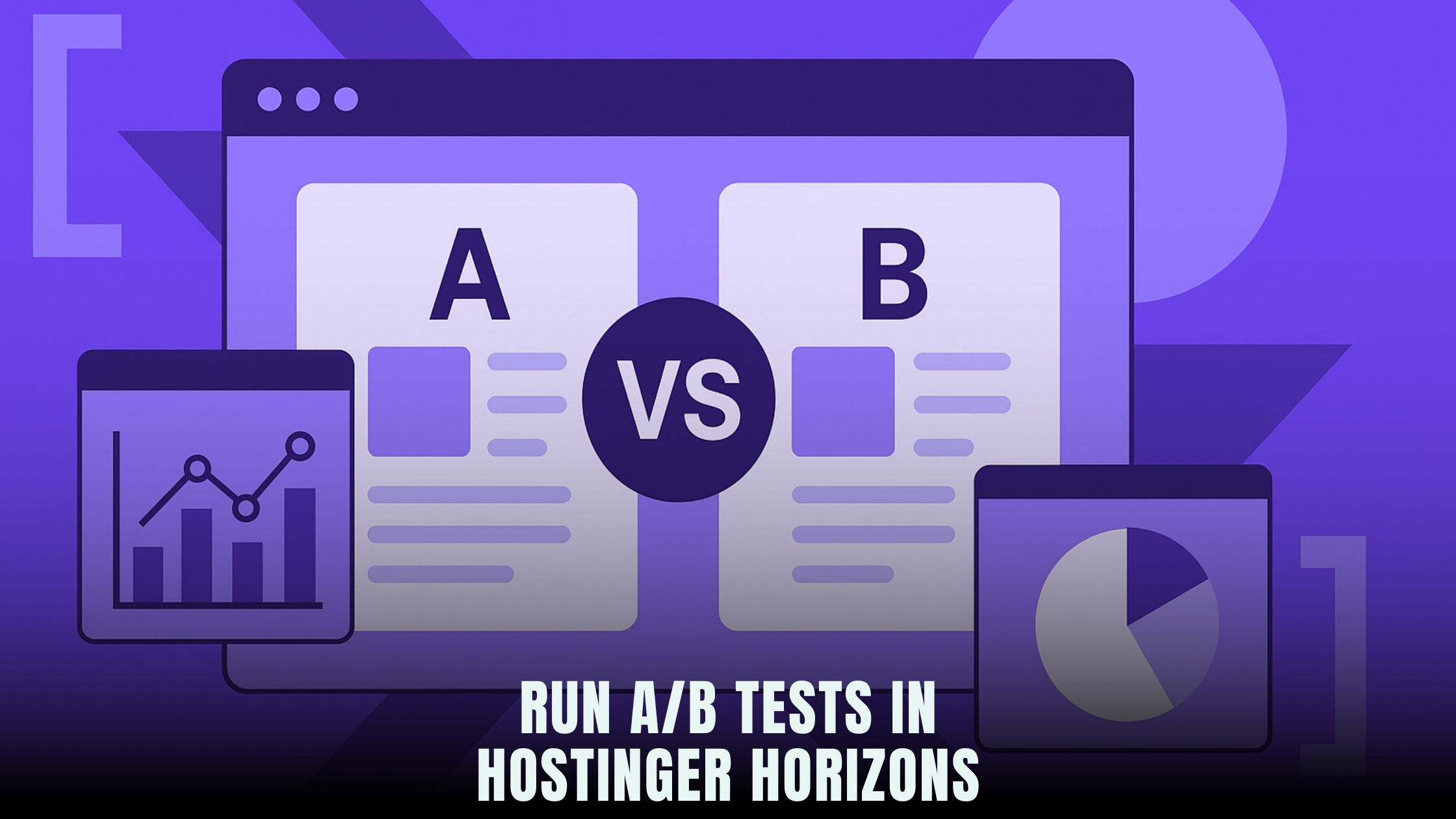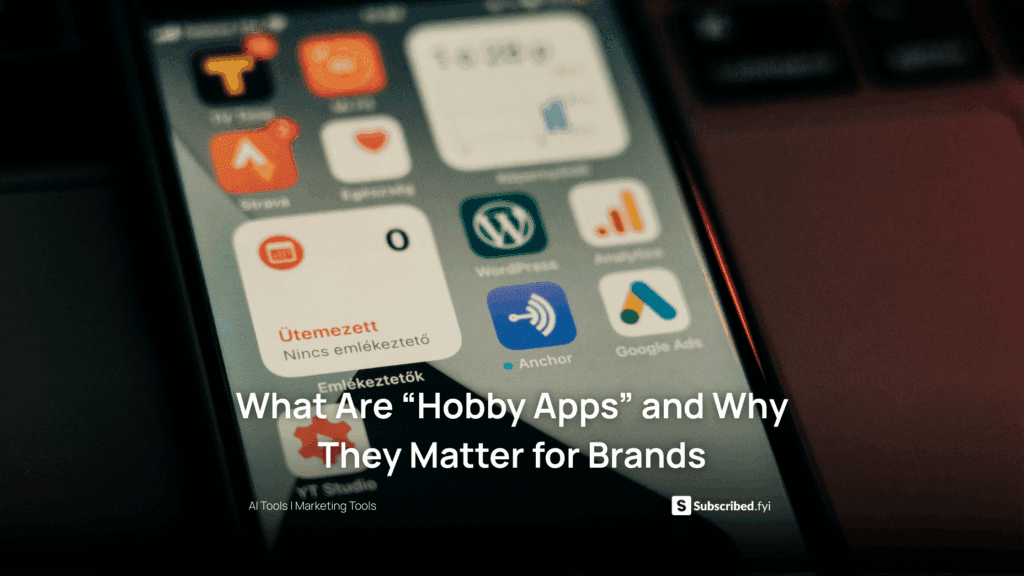Can You Run A/B Tests in Hostinger Horizons?
- WebOps Platforms Bug Tracking & Feedback Software Web Development & Design Website Builder


A/B testing is a cornerstone of data-driven decision-making in web development, allowing you to compare two versions of a page, feature, or element to see which drives better user engagement. With the rise of no-code platforms, you no longer need to write complex scripts or configure separate testing tools. Platforms like Hostinger Horizons empower solopreneurs and small teams to set up variant experiments directly within the builder’s interface. If you’d like to explore more no-code options, the AI-Powered Website Builders List provides a catalog of solutions that streamline A/B workflows for rapid iteration and growth.
Running A/B tests helps you optimize headlines, layouts, calls to action, and more based on real user behavior. Traditionally, this meant deploying separate scripts or relying on third-party services. Today’s no-code tools, such as those highlighted in the Vibe Coding Directory, integrate testing and analytics into one seamless environment. By comparing click-through rates, conversions, and other metrics in real time, you make informed changes that raise engagement and revenue—without waiting on developer cycles.
Why A/B Testing Matters for Web Apps
A/B testing eliminates guesswork by letting actual user data guide your design choices. Instead of assuming which headline or button color works best, you show half of your audience Version A and the other half Version B. Metrics like click-through rate, time on page, and conversion rate reveal which variant outperforms the other. Over time, those incremental improvements add up to significant gains in user satisfaction and business outcomes.
By embedding A/B testing into the development flow, you create a culture of continuous improvement. Every change, whether in copy, layout, or functionality, becomes an opportunity to learn. For solopreneurs and early-stage startups, this agility is essential: rapid validation prevents wasted effort on features that don’t resonate with customers, and it highlights the tweaks that drive the most value.
Getting to Know Variants and Traffic Splits
Variants are simply the different versions you want to compare. A headline change, an image swap, or a repositioned button can all serve as variants. Traffic split is how you divide your visitors between the control (original) and the test (new) version. A common approach is a 50/50 split, but you might choose 80/20 splits when testing higher-risk changes.
No-code builders like Bolt Builder and Tempo Prototyping offer visual editors for creating variants side by side. You can duplicate a page, make edits in a drag-and-drop canvas, and assign each variant to a traffic segment. Tracking is handled automatically, with analytics dashboards showing performance differences in real time.
Setting Up Basic A/B Tests Without Code
Most no-code platforms let you define a test in three simple steps: duplicate your element or page, apply your design changes, then choose the traffic split. Behind the scenes, the builder injects scripts to route visitors and log interactions. You don’t need to host separate files or manage testing libraries manually.
In Hostinger Horizons, you simply select a page component and click “Create Variant.” The AI chat interface prompts, “Set traffic distribution to 50/50,” and automatically configures the experiment. You can preview both variants in a live sandbox before going live, ensuring everything looks and behaves as expected.
Running A/B Tests in Hostinger Horizons
Hostinger Horizons integrates A/B testing directly into its AI-driven workflow. To start, you open the page editor, select the component you want to test—perhaps a headline or button—and choose “Make Variant.” Horizon then clones the block and allows you to edit the text, style, or layout for your new version.
Next, you define your traffic split percentage in the same interface. Horizon’s real-time sandbox shows both versions in action, so you can interact with each and verify functionality. When you’re ready, clicking “Publish” launches the test. All hosting, CDN, SSL, and data tracking are managed automatically by Hostinger Horizons, eliminating the need for separate deployments.
Designing Effective Test Variants
A successful A/B test focuses on clear, impactful changes. Tweak one element at a time—headline copy, button color, or form placement—to isolate what drives user behavior. Small adjustments, like changing “Buy Now” to “Start Free Trial,” can yield measurable lifts in conversion rates.
Use Horizon’s style editor to adjust fonts, colors, and spacing instantly. Ask the AI chat to “change button color to #ff6600 and increase font size to 18px,” and watch the new variant update live. Pre-built templates from resources like Lovable AI Templates offer tried-and-true design patterns you can adapt for your tests.
Measuring Results and Analytics
After your test runs for a sufficient time—typically at least one natural traffic cycle—you’ll want to analyze performance. Key metrics include click-through rate, conversion rate, bounce rate, and revenue per visitor. In Horizon’s analytics dashboard, you can compare variant performance side by side, visualize trends, and export data for deeper study.
For advanced analysis, integrate with Google Analytics or Mixpanel. A simple chat prompt, “connect Google Analytics,” lets Horizon send event data to your existing GA dashboard. You can then create custom reports or funnel visualizations to complement Horizon’s built-in summaries.
Managing Tests with Feature Flags
Feature flags let you enable or disable features for specific user groups without redeploying code. In Horizon, you can wrap a new component in a flag and roll it out gradually. For example, test a new navigation menu on 10% of your audience before expanding to 100%.
This approach reduces risk by limiting exposure to potential bugs or performance issues. Horizon’s flag manager provides a visual list of all active flags, their traffic allocations, and target segments. You can toggle flags on or off instantly, making it easy to pause or conclude tests based on emerging data.
Best Practices for Reliable A/B Testing
-
Test one element at a time to isolate cause and effect.
-
Run tests for a full week or business cycle to account for daily and weekly traffic patterns.
-
Ensure your sample size is large enough for statistical significance—use online calculators to determine minimum visitor counts.
-
Document your hypotheses and results to build a library of insights and avoid repeating past mistakes.
-
Avoid novelty effects by rotating control and test groups or running follow-up experiments to confirm long-term impact.
Scaling Your Experiments in Hostinger Horizons
As your site grows, you may want to run multiple tests simultaneously—on different pages, sections, or user segments. Horizon’s experiment manager lets you organize tests into campaigns, track their start and end dates, and monitor interactions between concurrent experiments.
Use the AI chat to schedule new tests—“start headline test on July 1 at 9 AM”—and Horizon automatically sets the schedule. If you ever need to roll back changes, the platform takes snapshots of your variants and lets you revert to the original with one click.
Real-World Success Stories
Small businesses and solopreneurs have seen conversion lifts of 10–25% by testing button copy, hero images, and pricing layouts. For example, a boutique coffee roaster swapped its “Shop Now” button for “Get Fresh Beans” and saw click-through rates jump by 15%. A digital agency tested two portfolio page layouts in Horizon’s sandbox, choosing the variant that kept visitors engaged 20% longer.
Use these case studies as inspiration for your own tests. Horizon’s built-in analytics and sandbox previews make it easy to replicate high-impact experiments tailored to your audience.
Bringing It All Together with Hostinger Horizons
No-code A/B testing in Hostinger Horizons brings speed and simplicity to your optimization workflow. You define variants with natural language, split traffic instantly, and view results in a unified dashboard. All hosting, SSL, and data tracking are managed in one platform, so you focus on insights and decisions, not DevOps overhead. With AI-powered design tweaks, real-time sandbox previews, and expert 24/7 support, Horizon empowers you to continuously improve your site’s performance and user experience.
Empowering Your Testing Journey
A/B testing doesn’t have to be complex or developer-heavy. By leveraging no-code solutions like Hostinger Horizons, you unlock rapid experimentation, data-driven design, and measurable improvements—all without writing code. Whether you’re tweaking headlines, testing new layouts, or experimenting with feature flags, Horizon’s integrated tools give you the confidence to make bold changes, knowing you can analyze and iterate quickly. Start running your first test today and watch your conversions soar.





